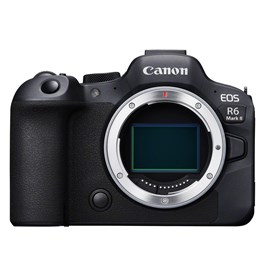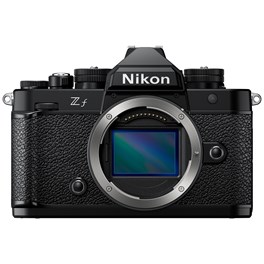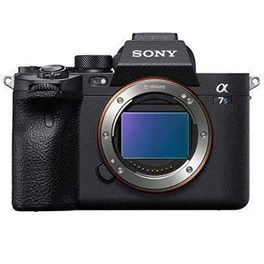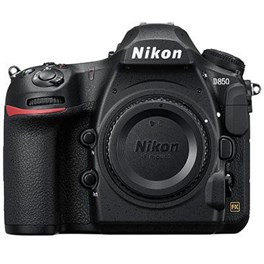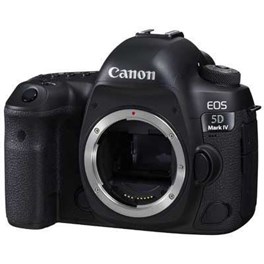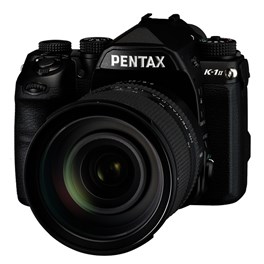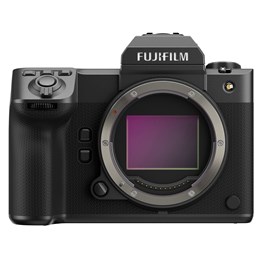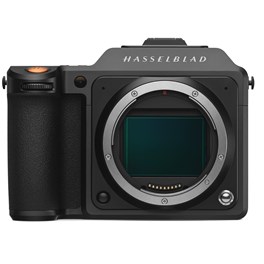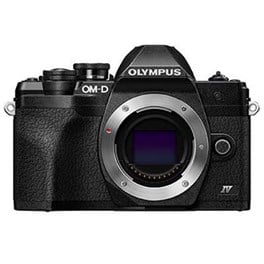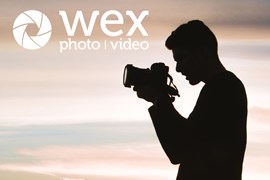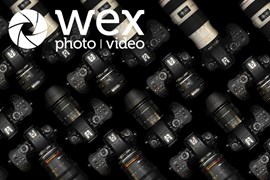
With one of the best cameras for low light, you can make the most of available light in any situation. Whether you’re working in dark interiors, looking to get atmospheric shots of night-time city streets, or pointing your camera skyward for dynamic astro images, a camera that’s capable in low light is going to be your best friend – and you have no shortage of options.
Low-light shooting has its own unique requirements when it comes to gear, so there are a few key features to hone in on when picking your camera. These are the key specs we’ve kept in mind when making our picks for this guide:
High ISO performance - The higher you can push the ISO setting on a camera, the more shooting flexibility you’ll have in low light. However, a camera needs to do more than just offer high ISOs – it needs to actually produce usable images at those settings.
In-body image stabilisation. Low-light photography is all about gathering as much light as possible. Image stabilisation systems help with this as they allow you to use longer shutter speeds while still getting acceptably sharp images. Bear in mind that this only factors in when you’re shooting hand-held – if the camera is mounted on a tripod, stabilisation isn’t a factor.
Sensor size/type - Larger sensors such as APS-C and full-frame are often desirable for low-light as they tend to perform better at high ISO settings. Some cameras also have back side illuminated (BSI) sensors, which provide better light sensitivity and noise control.
Lens options - All the cameras we’ve featured in this guide are interchangeable-lens models, and choice of lens is hugely important when it comes to low-light shooting. The wider the aperture you can get on your lens, the more flexibility you’ll have when it comes to shooting in low-light.
We’ve split our guide up into sections for different types of camera – and there is a dedicated budget section at the end for those who have less to spend. So let’s take a look at the best low-light cameras you can buy – and for more options, check out our guides to the best cameras for astrophotography and the best lenses for astrophotography.
Quick Navigation
Best Mirrorless Camera for Low Light Photography
Modern mirrorless cameras have fantastic low-light capability, and if you’re looking for a system that will handle astro and night-time scenes, mirrorless is an excellent place to start looking. Many contemporary mirrorless cameras for pros and enthusiasts have very high megapixel counts, but if you’re shooting in low light you may want to consider something with a little less resolution, as a lower megapixel count can often mean better performance at high ISO settings.
We’ve included a mix of low-light specialist cameras and all-rounders that still do a great job in dimmer conditions. We’ve chosen cameras aimed at enthusiasts, but remember you can also scroll to the bottom of this page for more budget-friendly options. Lastly, we haven’t forgotten about video shooters, and have chosen a cracking option for low-light video in addition to mirrorless cameras more suited for stills.
Canon EOS R6 Mark II Digital Camera Body
Raising the already high bar set by its predecessor, the Canon EOS R6 Mark II Digital Camera Body blends world-class performance with super-fast speed and unparalleled filmmaking features. A powerful 24.2-megapixel sensor can continuously shoot at 40fps, and can also record oversampled 4K 60p video or even 6K RAW. With other quality-of-life upgrades, shoot whatever you want however you like.
£1,999.00 View
Pros:
- Impressive ISO sensitivity range
- Great dynamic range, especially in RAW
- 8-stop stabilisation
Cons:
- Not many third-party lenses
With the EOS R6 Mark II, Canon has transformed our expectations of what a ‘mid-range’ camera can look like. This is a seriously capable shooter that can do just about everything, and that includes low light shooting. It’s got a powerful eight-stop optical stabilisation system, and it boasts a native ISO range that runs up to 102,400 (expandable to 204,800). You can really push into this ISO range and still get decent images, especially if you’re willing to shoot in RAW and spend a little time in post-processing recovering some shadow detail.
Honestly, there’s little to criticise about this fast-shooting hybrid camera. Granted, other systems offer broader lens ranges, given Canon’s restriction of third-party access to the RF mount, but there are still loads of excellent low-light options. The Canon RF 50mm f1.8 STM is a great affordable option, while the spectacular Canon RF 50mm f1.2L USM is a superb lens for professionals.
Nikon Zf Digital Camera Body
The Nikon Zf combines a heritage-style design with the latest Z series technology to create the perfect fusion of past and present. Although beaming with nostalgia, Nikon has powered the Zf with a 24.5MP full-frame sensor, an EXPEED 7 processor, 4K video recording, and an advanced 8-stop 5-axis VR system, granting users absolute sharpness, outstanding precision, and remarkable speed with any subject.
£2,149.00 View
Pros:
- Accurate autofocus with impressive low-light sensitivity
- Broad ISO sensitivity range
- Stabilisation with 8 stops of effectiveness
Cons:
- No AF joystick
When the beautifully designed Nikon Zf made its debut, a lot of hay was made regarding its gorgeous retro looks. The all-metal design hearkens back to classic film SLRs like the Nikon FM2, with a dial-led control experience that indicates, among other things, that Nikon is looking to compete with Fujifilm in the market of gorgeous retro-styled cameras.
However, the Zf is as capable inside as it is attractive on the outside, and once you dig into the spec sheet and try out the camera for yourself, you start to see what a great low-light performer it is shaping up to be. The autofocus system is specifically optimised to operate well in low light, capable of acquiring focus in conditions equivalent to -10 EV. The in-body image stabilisation provides up to eight stops of effective compensation for hand-held shooting, and the ISO range runs from 100 to 64,000 natively.
Sony A7S III Digital Camera Body
Free Gorillapod worth £99 Plus £150 Trade-in bonus
The Sony A7S III Digital Camera Body is the latest addition to Sony's S series camera line up. These cameras are designed to provide the highest level of sensitivity possible and the Sony A7s III does just that. It's equipped with an Exmor R 12MP Full-Frame BSI Sensor with an ISO sensitivity range from 80 to 102400, expandable from 40 to 409600. A newly designed BIONZ XR Processing engine provides up to an 8x faster performance over previous models. Its video capabilities are overwhelming, offering 4K 120P (4:2:2 10bit) recording and FHD 240P for stunning slow-motion video. It's equipped with an incredible 759 point on-sensor phase decision AF with real-time eye tracking of both humans and animals, as well as real-time tracking in both video and stills. This camera demonstrates Sony's ability to produce stunning image quality and professional performance in one body.
£2,969.00 inc. Cashback View
Pros:
- Absolutely unreal high-ISO performance
- Superb phase-detection autofocus
- Dazzling high-resolution electronic viewfinder
Cons:
- Low resolution means it’s likely not suitable for pure stills photographers
While we’re focusing more on photography than video in this guide, we could hardly put together a piece on low-light cameras and not talk about the Sony A7S III. Ever since the first Sony A7S dazzled photographers and videographers alike with its ability to seemingly turn night into day, this series has become a byword for spectacular low-light performance. With an ISO ceiling of 409,600, the Sony A7S III delivers better sensitivity than ever before, resulting in images with 15+ stops of dynamic range.
As touched upon earlier, this series is more oriented towards video than stills – hence the low megapixel count of 12MP. If you are only interested in stills, this isn’t the camera for you, as you’ll get more for your money elsewhere. But if you shoot predominantly video, or are a hybrid shooter that mixes in both (and you don’t need to print too large), the A7S III is one of the finest low-light performers ever made.
Best DSLR Camera for Low Light Photography
Want to shoot in low light with a DSLR? You’ll be in good company – photographers have been capturing spectacular low-light shots with DSLRs for decades now. While mirrorless may be hogging the limelight, a good DSLR can still be your imaging friend for life, and there are some amazing options to explore.
If you’re shopping for DSLRs, you’re going to be looking at options from one of the three major players in the market – Canon, Nikon and Pentax. We’ve included options from all three, focusing on full-frame cameras that are tried and tested when it comes to producing fantastic results in all conditions. And remember – one great advantage of DSLRs is the sheer number of lenses you have to choose from, especially if you’re willing to shop for second-hand lenses.
Nikon D850 Digital SLR Camera Body
Save £250, was £3249
Introducing, the Nikon D850, a photographic workhorse that has been equipped with a huge 45.7 megapixel sensor that will not disappoint. The 45.7 megapixel back-illuminated, full-frame CMOS sensor and extended battery life will keep up with all any photographic adventure you can throw its way, from the studio photo shoots to the remotest places on Earth. The tough and rugged magnesium-alloy build and all-weather sealing allow you to take its power wherever you want to go. The stunning image quality and impressive performance of this camera makes it the ultimate choice and will continue to be a game changer for years to come.
£2,799.00 View
Pros:
- Glorious full-frame back side illuminated sensor
- Autofocus performs brilliantly in low light
- Delivers clean images at high ISOs
Cons:
- A relatively big and bulky camera
- Newer cameras like the Zf have improved on it
The big, beautiful Nikon D850 has earned its rightful place in the DSLR hall of fame. A speedy beast with big full-frame resolution, it’s a camera that’s renowned for just getting the shot, again and again, under any circumstances – and it certainly doesn’t falter when the light levels drop. The autofocus continues to perform brilliantly in conditions as low as -4EV, and the ISO can be pushed and pushed while still producing relatively clean images – it still does brilliantly at ISO 25,600.
The Nikon D850 is a brilliant camera, and one that many photographers are still fond of. But it’s worth mentioning that time has marched on in the six years since its release, and for features like 5-axis image stabilisation, you’re going to want a newer model. Recent cameras like the aforementioned Nikon Zf have improved on its low-light autofocus performance.
Canon EOS 5D Mark IV Digital SLR Camera Body
The Canon EOS 5D Mark IV Digital SLR Camera Body offers a 30-megapixel CMOS sensor with a maximum ISO sensitivity of 32,000, and an expanded 61-point AF-system. Capture magnificent detail even in the toughest conditions as the camera body features a weather-resistant design. Users can enjoy beautiful 4K video recording at 30 fps; whereas, HD video can be captured at 120 fps when trying to achieve a slow-motion effect. In addition to this, WiFi and NFC connectivity are also available allowing for easy file transfer and more.
£2,299.00 View
Pros:
- Noise performance is very good even at higher sensitivities
- Solid DSLR build
- Reliable autofocus
Cons:
- No stabilisation
- Fixed rear screen
The last entry in a famous line of DSLRs, the Canon EOS 5D Mark IV still has a lot to recommend it when it comes to low-light performance. The sensitivity range runs to ISO 32,000 natively, and you can push this right up and still get usable images. The dynamic range of the full-frame sensor is consistently impressive, and 30MP is a nice resolution to sit in – giving you a little more cropping latitude than 24MP without making for noisy images or big files.
Once again of course, this is a fairly old camera – we’re talking seven years since release at this point, so if you want newer tech like image stabilisation, you’ll need to look elsewhere. Still, as all-rounder DSLRs go, the EOS 5D Mark IV is one of the best ever made, and it’s great for both stills and video in low light.
Pentax K-1 Mark II Digital SLR Camera with 24-70mm Lens
The Pentax K-1 Mark II is a powerful DSLR camera body that features a 36.4-megapixel full-frame CMOS sensor, a Prime IV image-processing engine and an impressive Dynamic Pixel Shift Resolution System. Complete with the 24-70mm f2.8 ED SDM WR Lens, this comprehensive kit delivers exceptional image quality throughout an incredibly versatile focal range and is perfect for weddings, portraiture, sports, nature, travel and more.
£2,589.00 View
Pros:
- Pixel Shift Resolution II mode can be used hand-held
- Very broad ISO range
- Astrotracer mode for night-sky images
Cons:
- K-mount has fewer lenses than Canon EF or Nikon F
A fully featured, full-frame DSLR, the Pentax K-1 Mark II comes packing a lot of features that make it a tempting choice for low-light shooting. Its effective 5-Axis Shake Reduction system allows for the user of slower shutter speeds when shooting hand-held, and also allows specialised modes like the high-resolution Pixel Shift Resolution II (which composites multiple images together) to be used without a tripod. The ISO range is also impressive – it runs all the way to ISO 819,200, and you can definitely still get decent prints at 25,600.
If you’re an astro shooter, the Pentax K-1 Mark II is definitely worth extra consideration. Its Astrotracer functionality uses the camera’s built-in GPS and stabilisation systems to effectively create an in-camera star-tracker, allowing for long-exposure images of the night-sky without creating star trails. Using this feature, photographers have achieved exposures of multiple minutes in length and still produced sharp images of stars with no trails. Normally you need an equatorial mount to achieve something like this.
Best Medium Format Camera for Low Light Photography
Digital medium format has its advantages and disadvantages in low light, which are worth considering carefully when you’re shopping for equipment. The large sensors produce fantastic dynamic range, providing tons of detail in the shadows of images. However, lenses for medium format tend to have narrower maximum apertures than full-frame, APS-C or MFT lenses, which can restrict your flexibility in low light – though this gap is narrowing, as Fujifilm, in particular, has demonstrated.
In the past, shooting digital medium format in low light would have meant you were restricted to a tripod. However, recent advancements in mirrorless medium format by the likes of Fujifilm and Hasselblad have seen great improvements in terms of autofocus and stabilisation in medium format bodies, making hand-held low-light shooting much more viable in medium format. Here are a couple of our favourite options.
Fujifilm GFX 100 II Medium Format Camera Body
The Fujifilm GFX 100 II redefines what it means to be more than full frame with an upgraded 102MP CMOS II HS sensor and high-performing X-Processor 5 engine. This masterful combination makes 8fps burst shooting and 4K 60P video possible, with access to an improved AI-based AF and 4:2:2 10-bit colour, positioning the GFX 100 II as an industry-leading medium-format camera for high-end productions.
£6,999.00 View
Pros:
- Beautifully built body is great in all weathers
- Improved 5-axis stabilisation rated to 8 stops
- GF lens range includes f/1.7 options
Cons:
- Cheaper GFX 100S offers similar image quality
It seems like with every new entry in the GFX series, Fujifilm is redefining what medium format can do. With faster-than-ever autofocus, the GFX 100 II performs more impressively than ever with moving subjects, and its eight-stop stabilisation system provides even more latitude in low light. Image quality from the GFX 100 II’s medium format sensor is utterly sublime of course; with a dynamic range of 14+ stops it can capture a huge amount of recoverable shadow detail.
The GF lens ecosystem has also expanded to include more low-light options. Fast standard primes like the Fujifilm GF 80mm f1.7 R WR and the Fujifilm GF 55mm f1.7 R WR give the shooter more latitude in low light than ever before, while still performing optically at a high enough level to make the most of the 102MP CMOS II HS sensor.
Hasselblad X2D 100C Medium Format Digital Camera Body
The Hasselblad X2D 100C features innovative improvements over the X1Ds. This medium format mirrorless camera has a powerful 100MP Back-Side Illuminated CMOS sensor that reduces noise and improves overall image quality. It also sports In-Body Image Stabilisation and an improved OLED EVF. With other features, such as internal SSD storage and a tilting display, the X2D is a compact but powerful tool.
£7,369.00 View
Pros:
- Stunning high-resolution imagery
- Effective 5-axis stabilisation
- BSI sensor design
Cons:
- No video option at all
- Autofocus still hunts
The Hasselblad X2D 100C produces sublime imagery – that’s pretty much a given for anyone who’s familiar with this spectacular medium format system. However, this newer model also packs in a number of features that make it much more viable for low light. The 100MP CMOS medium format sensor is now a backside illuminated (BSI) design, improving sensitivity and performance in low light, and sports phase-detection autofocus. While it can still struggle with moving subjects, it's a marked improvement over the contrast-detection system in previous cameras. The 5-axis stabilisation system also helps in low light, giving you so much more latitude to use slower shutter speeds.
Bear in mind that this is a pure stills camera through and through, without even an option to shoot video. If you want to shoot video in medium format, the GFX 100 II is the camera to buy. But for stills purists, the Hasselblad X2D 100C makes a compelling case for itself.
Best Budget Camera for Low Light Photography
While we’ve featured many professional and high-end enthusiast cameras in this guide, the truth is that low-light photography doesn’t have to be expensive! There are plenty of cameras out there that will do an excellent job of shooting in low light for a much lower price than the big dogs – especially if you pair them with a solid large-aperture lens (many of which can be bought for two-figure prices).
These aren’t literally the cheapest cameras you can buy, but they are affordable models for beginners and intermediate shooters that we believe will be especially suited to low-light shooting. Remember that if you’re looking to save money it’s always worth shopping for used camera equipment, and we also have camera gear trade-in services available if you have old equipment you’re not using.
Olympus OM-D E-M10 Mark IV Digital Camera Body - Black
The Olympus OM-D E-M10 Mark IV is a compact, lightweight and impressive camera body that is designed with travelling and mobile creatives in mind. It features a redesigned grip, faster and more precise AF, and powerful 5-axis image stabilisation which together allow you to have a steady hand and be able to capture the action in front of you in stunning detail without camera-shake. It comes with a useful flip-down LCD monitor which makes for well-composed selfies and vlogs. Equally, it has a high-definition EVF that provides you with real-time settings and a crystal clear image.
£549.00 inc. Cashback View
Pros:
- Highly effective image stabilisation
- Live View Boost makes composition easier in low light
- Lots of lightweight, affordable lenses available
Cons:
- Larger sensor rivals have better noise control
A beginner-friendly model in the Olympus / OM System mirrorless family, the Olympus OM-D E-M10 Mark IV is a more sophisticated camera than you might think from that description. Equipped with a Four Thirds sensor, it has a highly effective built-in 5-axis stabilisation system that makes hand-held shooting at slower shutter speeds much more viable. The sensor’s high-ISO performance is also pretty darn good, achieving printable results up to ISO 6400 or so.
One feature we particularly like is the ‘Live View Boost’, which makes the viewfinder easier to view in low light by boosting the gain and lowering the frame rate, in turn making composition easier in dark conditions.
The Micro Four Thirds system also offers a great number of lightweight, large-aperture lenses that will help you when shooting in low light. The Panasonic 9mm f1.7 Lumix G Leica DG Summilux ASPH, Olympus M.Zuiko Digital 17mm f1.8 and Panasonic 25mm f1.7 Lumix G ASPH are all excellent options for getting started.
Pros:
- Affordable DSLR with solid image quality
- Loads of EF lenses available
- Auto Lighting Optimizer boosts shadow detail
Cons:
- No weather-proofing or stabilisation
- 9-point AF system may struggle in low light
The Canon EOS 250D is a beginner-friendly DSLR, and if you’re new to low-light shooting and want to get a handle on the basics, it’s an outstanding choice. Image quality produced by the EOS 250D’s APS-C sensor is reliably excellent, and you can push the ISO setting reasonably high and still get solid results. It runs up to 25,600 natively and expands to 51,200, though we’d say you’ll want to keep it to 12,800 unless there really is no other option.
Canon has also included an Auto Lighting Optimizer mode that boosts detail in the shadows, which is another useful feature to have in low light. Lens-wise, the EF-mount has a lot to choose from, though as far as affordable large-aperture lenses go, you really can’t beat the good old Canon EF 50mm f1.8 STM, a.k.a. the nifty fifty.

FAQs
How can I improve my low-light photography skills?
You can enhance your low-light photography by using a tripod to stabilise your camera, adjust your camera settings, such as ISO, aperture, and shutter speed, and finally use a wide-aperture lens for better light intake.
What is ISO in low-light photography?
ISO in low-light photography represents the sensitivity of your camera's sensor to light. A higher ISO setting allows your camera to capture more light in low light conditions but can introduce noise. Balancing ISO with other settings is crucial for achieving the best results.
How can I reduce noise in low-light photos?
The best way to reduce noise in low light your photos is to use the lowest ISO setting possible while maintaining proper exposure, but you can also use noise reduction software in post-processing. Additionally, you can shoot in RAW format for more control over noise reduction during editing.
What is the best lens for low-light photography?
A prime lens with a wide aperture, such as an f1.4 or f1.8, is ideal for low-light photography. These lenses allow more light to enter the camera, resulting in better performance in dark conditions.
How do I use long exposure in low-light photography?
Long exposures involve keeping the camera's shutter open for an extended period, often seconds or minutes. This technique captures more light, making it suitable for low light situations. To use a long exposure, use a tripod and set a slow shutter speed.
What is light painting in low-light photography?
Light painting is a creative technique in low-light photography where you use a light source (e.g., flashlight or LED) to "paint" light onto a subject while the camera is in long exposure mode. This creates artistic and unique effects.
Can smartphone cameras capture good low-light photos?
Some smartphones have advanced low-light photography capabilities, but they may not match the performance of dedicated DSLR or mirrorless cameras. Look for smartphones with larger sensors and Night Mode features for better results in low light.
How do we decide?
Our in-house photography experts, store staff and partners all work collaboratively to pour over these guides. The cameras and equipment recommended in our guides are based on their personal opinion, empirical experience and of course, feedback from our customers. We way up price, features, quality and the all-important 'je ne sais quoi' to make sure we recommend products that will delight and inspire.
If you would like more advice on any purchase our contact centre staff are here to help. Alternatively, you can reach us via email or social media. And don't forget. If you were to purchase anything based on our recommendations you'll be covered by our full returns policy
Buying Guides
